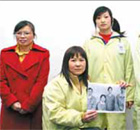Asia-Pacific
Russia, US plans 'radical' cuts in weapons: Lavrov
(Xinhua)
Updated: 2009-12-22 20:18
 |
Large Medium Small |
MOSCOW: A new Russia-US treaty on strategic arms reduction would envision "radical, unprecedented" slashes in strategic offensive weapons, Russian Foreign Minister Sergei Lavrov said Tuesday.
When addressing university faculty and students in Tashkent, Uzbekistan, Russia's top diplomat also said "interconnection between strategic offensive nuclear and non-nuclear weapons will be documented in the new treaty."
Moscow and Washington have been in intense talks in the past few months in a bid to find a replacement for the Strategic Arms Reduction Treaty (START-1), which expired on Dec. 5.
| ||||
"We are optimistic about the future of Russian-American relations," said Lavrov as cited by the Interfax news agency.
The foreign minister also said the upcoming document was "of a fundamentally new quality" that "envisions equal rights and symmetric measures of control."
Russia's top military officer, Nikolai Makarov, said Monday that Russia and the United States were likely to clinch the new START treaty early next year, while the Russian foreign ministry said the same day that talks on nuclear disarmament would continue in Geneva in January.
START-1, signed in 1991 between the Soviet Union and the United States, obliged both sides to reduce the number of their nuclear warheads to 6,000 and delivery vehicles to 1,600.
The new treaty's outline agreed by the two presidents at a July summit in Moscow included slashing nuclear arsenals to 1,500 to 1,675 operational warheads and delivery vehicles to 500 to 1,000.









